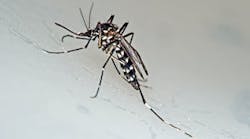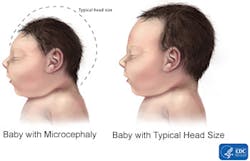Zeroing in on the Zika virus
Zika virus was previously almost unknown in the Americas, but has now become a global health concern due to its link to a rare birth defect
It seems we have a major health threat looming, according to the US Centers for Disease Control and Prevention (CDC). The CDC issued a travel warning on January 19, 2016, for 14 countries and territories in the Caribbean and Latin America, including Puerto Rico, where infection with the Zika virus is a risk. It is a mosquito-borne disease. This article will summarize this warning.
The CDC has three levels of warnings: Warning Level 3, Avoid Nonessential Travel; Alert Level 2, Practice Enhanced Precautions; and Watch Level 1, Practice Usual Precautions. (1) The Zika virus warning is currently Alert Level 2.There are currently warnings for travel to Puerto Rico, the Caribbean, Mexico, South America, and Central America, and now, the United States.
READ MORE | Is it safe? Pregnancy and local anesthetics
The Zika virus is spread when a yellow fever (Aedes aegypti) mosquito bites an infected person and then bites someone else. While not usually transmitted directly from person to person, it has been shown that the virus can be sexually transmitted. (3) A university biologist from the Colorado State University passed the virus to his wife after a trip to Senegal.
Zika fever is usually a mild illness with fever, rash, nausea, and joint pain. There is no preventive vaccine or treatment, according to the CDC. Preventive measures include the use of EPA-registered insect (mosquito) repellents, wearing long sleeves and pants that are permethrin-treated, and use of caution in areas predisposed to accumulation of water where mosquitos breed. Visit this webpage for more on permethrin-treated clothing. (4) EPA-registered insect repellents contain DEET, picaridin, oil of lemon eucalyptus (OLE), or IR3535 (Ethyl butylacetylaminopropionate). CDC recommends always using these products as directed. When used according to the product label, insect repellents containing DEET, picaridin, and IR3535 are safe for pregnant and nursing women and children older than two months. OLE products should not be used on children under 3 years of age. (5)
There is a specific webpage for health-care providers here. It includes information on clinical evaluation and diagnostic testing.
The bottom line, as always, is prevention. At press time, the virus has been detected in Texas, Hawaii, and Illinois. Avoid getting bitten by mosquitoes, and if you do develop symptoms, especially if you are pregnant, obtain medical care promptly. Complications are only seen after the birth of the baby. For “Interim Guidelines for Pregnant Women During a Zika Virus Outbreak — United States, 2016,” click here. While there is no specific antiviral treatment for Zika fever, testing and supportive care is recommended.
READ MORE | New patent on synthetic molecules brings researchers closer to new periodontitis treatment
On February 1, 2016, the World Health Organization (WHO) announced that the explosive spread of the Zika virus in the Americas is an "extraordinary event" that merits being declared an international emergency. (6) The WHO said last week the Zika virus was "spreading explosively" and could infect as many as 4 million people in the Americas. (6) The American Medical Association has published a resource center.
References
1. Travel health notices. CDC website. http://wwwnc.cdc.gov/travel/notices. Accessed February 2, 2016.
2. Facts about Microcephaly. CDC website. http://www.cdc.gov/ncbddd/birthdefects/microcephaly.html. Updated January 29, 2016. Accessed February 2, 2016.
3. Parchment R. Zika Virus: New Mosquito Disease a Threat to the U.S. http://www.inquisitr.com/2107712/zika-virus-new-mosquito-disease-a-threat-to-the-u-s/#ldk0TkYwMksdBK06.99. Published May 21, 2015. Accessed February 2, 2016.
4. Permethrin Treated Clothing. National Pesticide Information Center website. http://npic.orst.edu/pest/mosquito/ptc.html. Updated November 18, 2015. Accessed February 2, 2016.
5. CDC issues interim travel guidance related to Zika virus for 14 Countries and Territories in Central and South America and the Carribean. CDC website. http://www.cdc.gov/media/releases/2016/s0315-zika-virus-travel.html. Published January 15, 2016. Accessed February 2, 2016.
6. Zika virus tied to birth defects is international emergency, WHO says. Yahoo Sports. http://sports.yahoo.com/news/declares-zika-virus-global-public-health-emergency-184358252--finance.html;_ylt=AwrTceNhra9Wu_oAouwnnIlQ;_ylu=X3oDMTByNWU4cGh1BGNvbG8DZ3ExBHBvcwMxBHZ0aWQDBHNlYwNzYw--. Published February 1, 2016. Accessed February 2, 2016.



